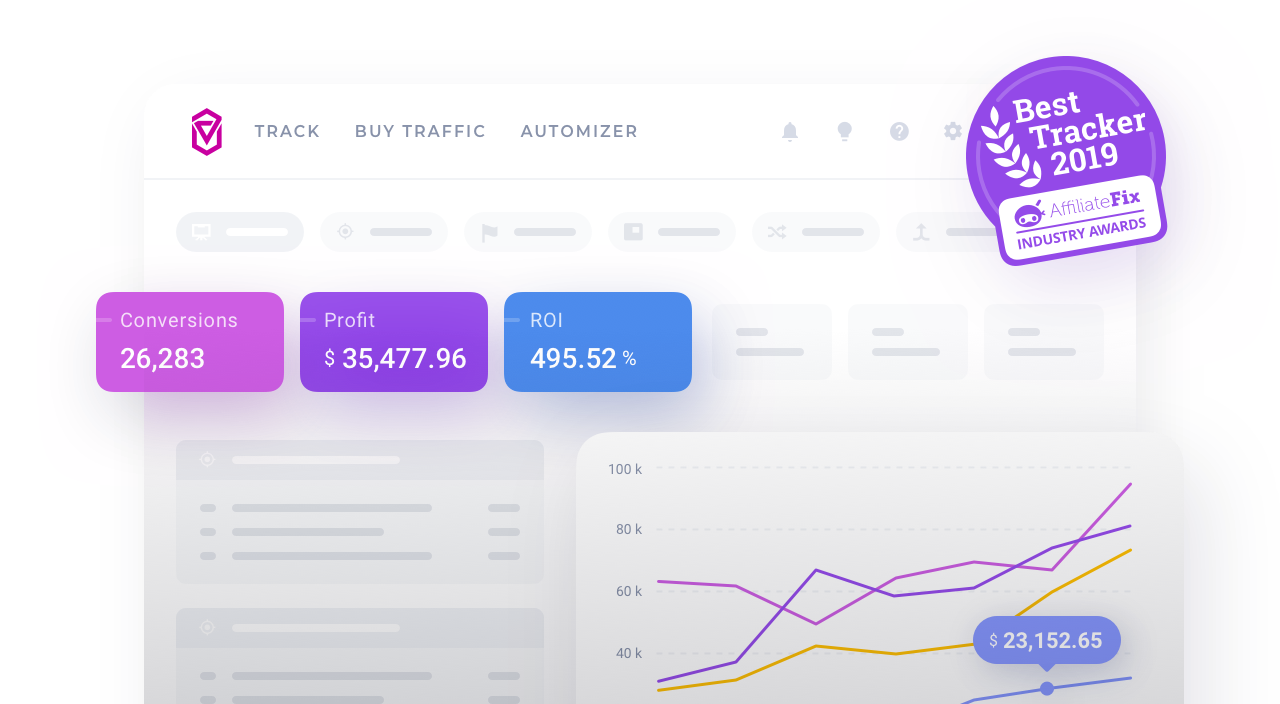Redirect Modes
Redirect modes determine, firstly, how redirection to the offer (campaign endpoint) is handled and secondly, whether referrer data is passed through or not.
Expand
Redirect modes govern how the traffic is handled during the second transition (from a landing page to an offer). The Meta refresh and Double meta refresh modes offered by Voluum are useful ways of protecting the intellectual property an affiliate marketer may have built up by running successful offers. They allow you to prevent the
Voluum Info: Referrer data is unique information that is readable by servers / browsers / applications. It can be used to ascertain the origin of a visitor and can be relayed as full referrer URLs and/or cookies.
Voluum Info: Redirect modes are only available for campaigns with a landing page. Offer-only campaigns cannot use redirect modes.
There are four redirect types:
- 302: This is a default option. This is a standard temporary HTTP redirect that sends a visitor directly to the desired location – your promoted offer. The referrer data is passed to the campaign endpoint.
-
Meta refresh: When set, the browser starts loading the page - but only the head, not the body of the page - before going to the new destination. In the <head> tag of the HTML page, triggering the browser to refresh and load a new URL. The referrer data is hidden with this mode selected.
Pricing plan availability: This feature may not be available on all pricing plans.
-
Double meta refresh (DMR): Double meta refresh is just meta refresh, but performed twice consecutively. As a result, an affiliate network will see the 'no-referrer' information, as long as a browser respects the
metatag. If it doesn't, the affiliate network will see a redirect domain name as the referrer. Due to this extra redirect, DMR is the most reliable redirect mode to ensure that the referrer data is not leaked to the owner of the offer, usually an affiliate network. It might be also the slowest one because of this double redirect.Pricing plan availability: This feature may not be available on all pricing plans.
- Direct: This selects the direct method of tracking for the second transition, from a landing page to an offer. Using this method for the second transition may be beneficial, as some traffic sources may check links on landers for redirects (which may not be allowed). Also, from a visitor's perspective, a direct link looks like it is more trustworthy, as there is no visible tracking. Lastly, direct tracking is a little bit faster, and in case of using a redirect method for a second transition - if a tracking domain is flagged, such a redirect may be blocked. If you select this method, you will have to implement the Lander Tracking script into the Lander’s code so the Click URL could be replaced with Offer URL during redirection.
You need to select one of the redirect modes while configuring a
 |  |
Moreover, the redirect mode can be applied either globally, Default redirect mode, or individually per path, Redirect mode.
Example:
If you have a campaign funnel with a landing page then, when visitors click a


